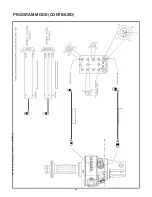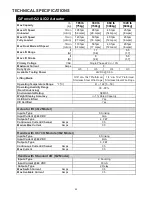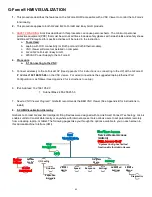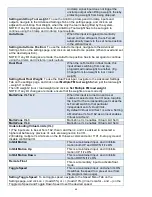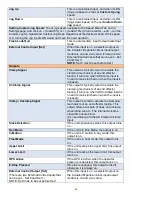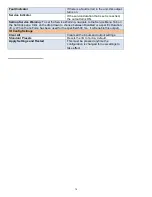
SLACK SPRING ADJUSTMENT
Slack spring adjustment is necessary if one or more of the following conditions apply:
• When wire rope continues to “pay out” from actuator when end effector (handle, tooling) is being
supported and down travel is commanded.
• When slack wire rope deflection exceeds 3 inches when end effector is supported.
• When tooling is added to a G360™ assembly.
• When an air-line coil hose assembly is added between the end effector and actuator.
• When a change from pendant handle to slide handle or vice-versa occurs.
•
When chatter or erratic travel down operation occurs when using an unloaded G360
1
or
weighted hook traveling downward from top of travel up limit (spring too tight).
1
Unloaded G360™ equipped hoist may encounter this type of operation until tooling is added.
Slack Spring Adjustment Procedure:
1. Use an M3 hex wrench to remove all screws securing the blue rear
cover to actuator. Place screws in cover and set aside.
2. Locate slack spring over the motor, next to casting (
diagram V
).
Spring is held in place by a motor bracket on one end and an eyebolt
on the other end.
3. Using a 10mm open-end wrench, loosen the nut closest to the “eye”
(inside) on bolt (
diagram W
).
4.
If chatter or erratic operation of hoist while traveling down is
encountered
, the end effector or tooling on wire rope is not heavy
enough to overcome the spring tension. Loosen the outside nut one
half turn and test the hoist operation (full stroke up and down)
between each half turn adjustment of eyebolt nut until chattering is
eliminated.
5. All other conditions will require the outside nut to be adjusted by
turning clockwise, tightening to increase tension in the slack spring.
Before tightening this nut, be sure there is enough free travel of the
eyebolt (inside nut is loose enough).
6. Using the applications’ end effector (handle, unloaded end tool),
travel downward resting end effector on floor. If rope continues to
“pay out” from actuator beyond two seconds after reaching floor,
remove hand from handle or release down button (pendant). Turn the
outside nut clockwise one half turn tightening it. Test again by
traveling up removing handle or tooling from floor and travel down
again resting on floor. Continue adjusting and testing this until rope
travel stops within two seconds of effector resting (supported) on floor
and deflection of rope is 3-4 inches. Tighten inside nut clockwise until
“jammed” against sheet metal while keeping eyebolt stationary.
7. Correct slack adjustment occurs when a deflection of the wire rope is
3-4 inches when in slack mode and rope travel stops (
diagram X
).
Diagram V.
Diagram W.
Diagram X.
3-4"
3-4"
58


